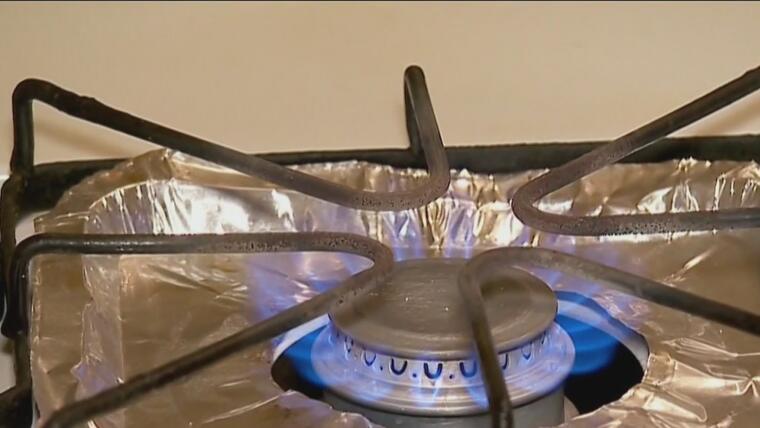By Suzy Khimm, NBC News; and Perla Trevizo, ProPublica and The Texas Tribune
*
Carbon monoxide poisoning is almost completely preventable.
Yet each year, more than 400 people die and thousands more fall ill from it.
Usually the culprit is a malfunctioning or misused appliance.
But carbon monoxide poisoning can be especially dangerous during power outages, when people use alternative sources of fuel or electricity, such as generators.
The winter storm in Texas in mid-February triggered the worst carbon monoxide poisoning incident in the nation's recent history, according to three experts consulted by ProPublica, The Texas Tribune and NBC News.
Freezing Temperatures Increase Cases of Carbon Monoxide Poisoning in Texas
Feb. 18, 202101: 46
At least 11 people died and more than 1,400 residents
went to emergency rooms for carbon monoxide poisoning during the storm, according to the data.
This gas is particularly dangerous because it is odorless, colorless, and tasteless, and it
can be highly fatal within minutes.
Even those who survive poisoning can suffer brain damage and other long-term health problems.
The best way to detect dangerous levels of this poisonous gas in your home is to
have a working carbon monoxide monitor,
which will sound an alarm if there are high or risky levels of this substance.
["A public health disaster": Texas does not require carbon monoxide alarms. Its most vulnerable residents paid the price]
Here's what you need to know about carbon monoxide and how to keep your family and home safe, especially during power outages.
Where does carbon monoxide come from?
Carbon monoxide is produced when not enough oxygen reaches a combustion source.
Furnaces, car engines, stoves, generators, grills, water heaters, and clothes dryers are some of the sources that can release carbon monoxide due to improper ventilation, mechanical problems, or other problems.
What are the most common symptoms of carbon monoxide poisoning?
Early symptoms may include a headache, dizziness, and nausea, similar to the flu.
At higher levels of exposure, it can cause vomiting, weakness, shortness of breath, chest pain, and confusion.
Without immediate treatment, people can lose consciousness and die.
[Three little brothers and their grandmother died while sheltering from the cold without electricity in Texas. His house caught fire]
What should I do if I feel any of these symptoms?
If you suspect carbon monoxide poisoning, leave the house and seek medical help immediately.
How do carbon monoxide alarms work? Should I have them in my house?
Carbon monoxide alarms detect CO that builds up in the air and activate when the gas reaches dangerous levels.
The Centers for Disease Control (CDC) recommends that every home have at least one working carbon monoxide alarm.
What does a carbon monoxide alarm look like?
Some CO alarms are white and round, similar to smoke alarms, while others are rectangular.
Any approved device must be clearly labeled a "carbon monoxide alarm."
You need a carbon monoxide alarm even if you have a smoke detector.
Smoke and CO alarms are also available in one.
CO alarms can be battery operated or wired with a battery backup.
Where should carbon monoxide alarms be installed and how often should I check them?
Fire safety experts recommend installing one in the hallway outside of every room and on every level of the home.
Because carbon monoxide is light, alarms must be mounted on the wall, 5 feet high, according to the Environmental Protection Agency (EPA).
The alarms should be checked at least once a month, and the batteries changed twice a year.
How to protect yourself from dying from carbon monoxide?
Dec. 6, 201902: 35
Is my landlord required to install a carbon monoxide alarm?
Most states require carbon monoxide alarms on newly built or remodeled homes, and nearly 30 states require them on some or all existing homes.
Cities and counties can also approve their own requirements for CO alarms.
Check with your local fire marshal or building code office.
Owners must provide them in some states and cities.
If you are a tenant in a state or locality that requires carbon monoxide alarms but you do not have one in your home, contact your local or state office that handles tenant complaints.
NBC News
What should I do if my carbon monoxide alarm goes off?
Get out of your home immediately and call 911.
What else can I do to prevent carbon monoxide poisoning?
Generators, grills, camp stoves, and other fuel-burning devices should never be used inside a home, basement, garage, or motor home.
Generators should be used away from windows, doors, and ventilation areas of a home.
Never use an oven or gas stove to heat your home.
Fuel-burning furnaces, fireplaces, water heaters, and other appliances must be properly installed, regularly maintained, and well ventilated.
Cars should not be left idle in garages attached to houses, even if the garage door is left open.
Who can I call if I have questions about staying safe?
You can call the National Poison Control Center at 1-800-222-1222.
*
ProPublica is an independent, non-profit media outlet that produces investigative journalism in the public interest.
Subscribe
to receive your stories in Spanish by email.
This article is published in conjunction with The Texas Tribune and NBC News.
Translation by Noticias Telemundo.

